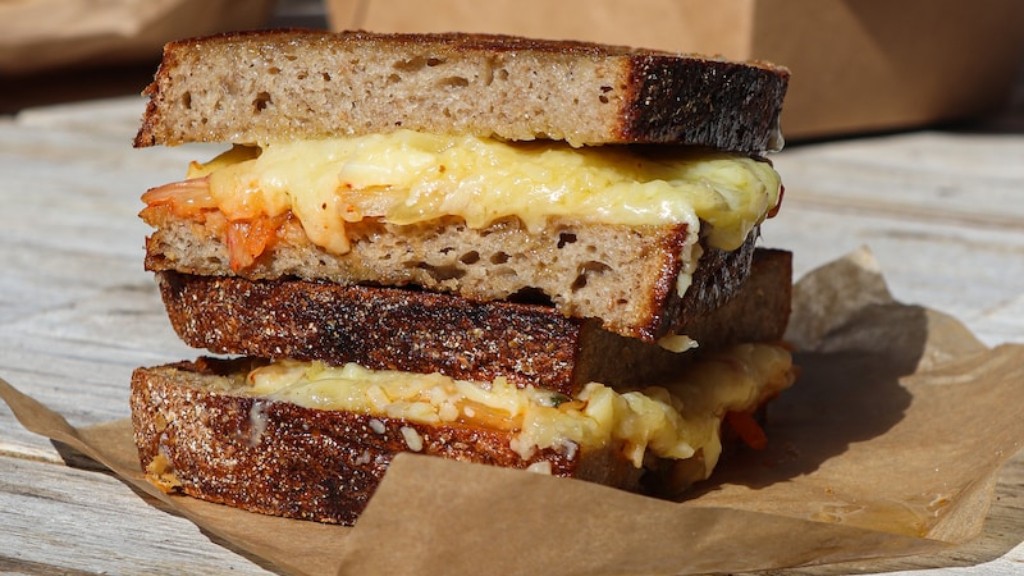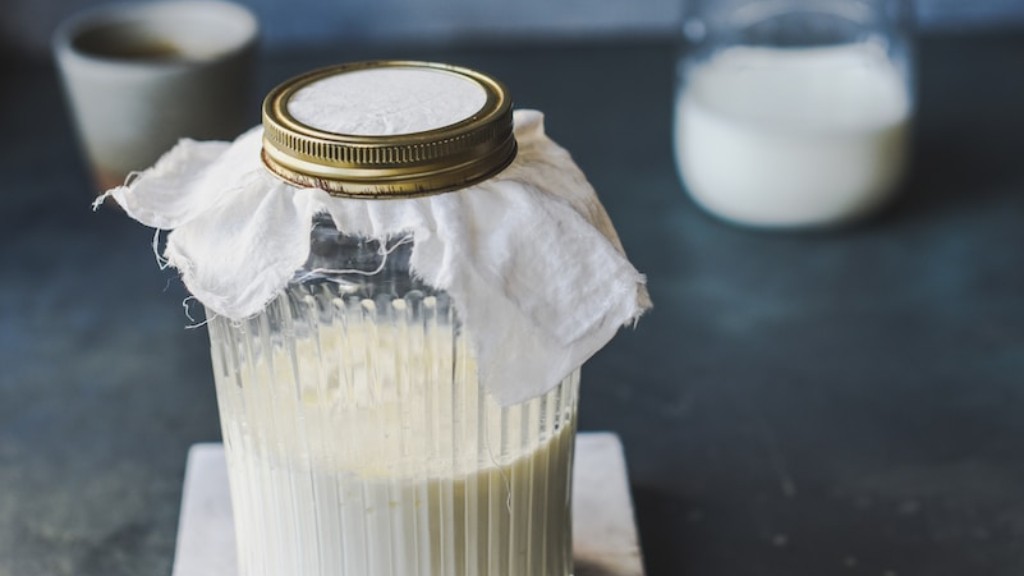Butter has been a staple food for centuries, used in everything from savory dishes to pies and cakes. It adds texture to recipes, but more than that, it provides a rich, creamy flavor to baking, roasting and more. But butter isn’t just something you can pick up from the grocery store — you can also make it from 2 percent milk at home. Making butter from 2 percent milk is simpler than you might think, and getting the buttery texture you’re looking for is only a few steps away. Here’s an overview of how to make butter from 2 percent milk.
1. Chill The Milk
The first step in making butter from 2 percent milk is to chill the milk. You want to cool it down to about 40-45 degrees Fahrenheit, which will help separate the butter fat from the liquid. The best way to chill the milk is to pour it into a container and set it in the refrigerator for several hours. If you’re short on time, you can also fill a large bowl with ice and cold water and set the container of milk in it.
2. Add The Salt
Adding a bit of salt to the milk helps to bring out the flavor of the butter, as well as give it a longer shelf life. You don’t need to add too much—just a pinch or two. You can also add herbs or spices for additional flavoring, though this is optional.
3. Begin The Churning Process
Churning the milk is the process of separating the butter fat from the liquid. This can be done in several ways, including using an electric stand mixer, a hand mixer, a food processor, or even just shaking the container vigorously. It can take anywhere from five to fifteen minutes for the butter to separate completely, so be patient and keep churning. As the butter begins to separate, the liquid will become more and more frothy.
4. Drain The Buttermilk
Once the butter and buttermilk have separated, you’ll need to drain the buttermilk from the butter. Use a fine-mesh strainer or cheesecloth to strain off the liquid. You can reserve the buttermilk for other uses, such as baking, or discard it. Be sure to save any herbs or spices that may have been added to the milk.
5. Rinse The Butter
Rinsing the butter helps to rid it of any remaining buttermilk, as well as help it hold its shape better. Once the butter has been drained, place it in a bowl of cold water and use your hands to work it until it is rinsed and somewhat firm. Drain the water and repeat the process several times, until the water runs clear.
6. Press The Butter
The next step to making butter is to press the butter to remove any remaining moisture and give it a nice, firm texture. To do this, use a cheese press or simply place the butter in a cheesecloth-lined bowl and press down gently but firmly until the desired texture is achieved. You can also shape the butter into a log or patty and wrap it in plastic wrap to store in the refrigerator.
7. Enjoy Your Butter
And now you can enjoy your homemade butter! It can be added to recipes for baking, sautéing, and more. As it was made from 2 percent milk, you can rest assured that it will have less fat and calories than regular butter. Store any unused butter in a sealed container in the refrigerator and it will keep for up to a week.
Tips For Making The Perfect Butter
Making butter at home may seem daunting, but it’s actually quite easy. Here are a few tips to help you create the perfect batch:
- Use high-quality milk. High-quality milk will help create a higher-quality butter. Whole milk or cream will yield the creamiest butter, but you can use 2 percent milk for a slightly lighter version.
- Be patient. It may take up to fifteen minutes for the butter to separate completely, so be sure to give the churning process enough time.
- Be creative. You can add herbs, spices, or other flavoring agents to your butter for unique flavor combinations.
How To Store Home-Made Butter
Once you’ve made your butter, you want to be sure to store it properly to maintain its flavor and texture. To store homemade butter, line a refrigerator-safe dish with parchment paper, and then form the butter into a log or patty and place it in the dish. Cover it with plastic wrap and store it in the refrigerator for up to one week. You may also wrap the butter in parchment paper and store it in the freezer for up to six months. Be sure to thaw in the refrigerator before using.
Health Benefits Of Home-Made Butter
Making your own butter from 2 percent milk has some health benefits as well. Since the milk is lower in fat than other varieties, the butter will have less fat and calories, which can be beneficial for those looking to watch their weight. It’s also free of any added preservatives or additives often found in store-bought versions, so you can be sure the butter you’re consuming is all-natural.
Alternative Method Of Making Butter From 2 Percent Milk
If you don’t want to go through the hassle of making your own butter, you can also purchase premade 2 percent butter spreads from the grocery store. These butter spreads are made from 2 percent milk, and are usually fortified with essential vitamins and minerals. Be sure to read the label to ensure that you’re getting the healthiest option for your needs.
Recipes Using Home-Made Butter From 2 Percent Milk
Now that you know how to make your own butter from 2 percent milk, you can use it in a variety of recipes. Try adding it to mashed potatoes for a creamy, buttery flavor, using it to make scones or biscuits, or even using it to make a rich, indulgent compound butter and spreading it on toast.
Maintaining Equipment For Making Butter From 2 Percent Milk
Making butter from 2 percent milk requires minimal equipment, which means it’s a great option for those who don’t have a lot of kitchen gadgets. To keep your equipment maintained, be sure to wash them after each use and store them in a dry place. If you’re using an electric mixer or food processor, be sure to keep the blades sharp for efficient churning.




